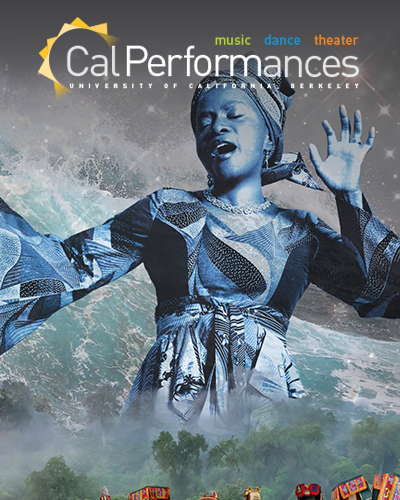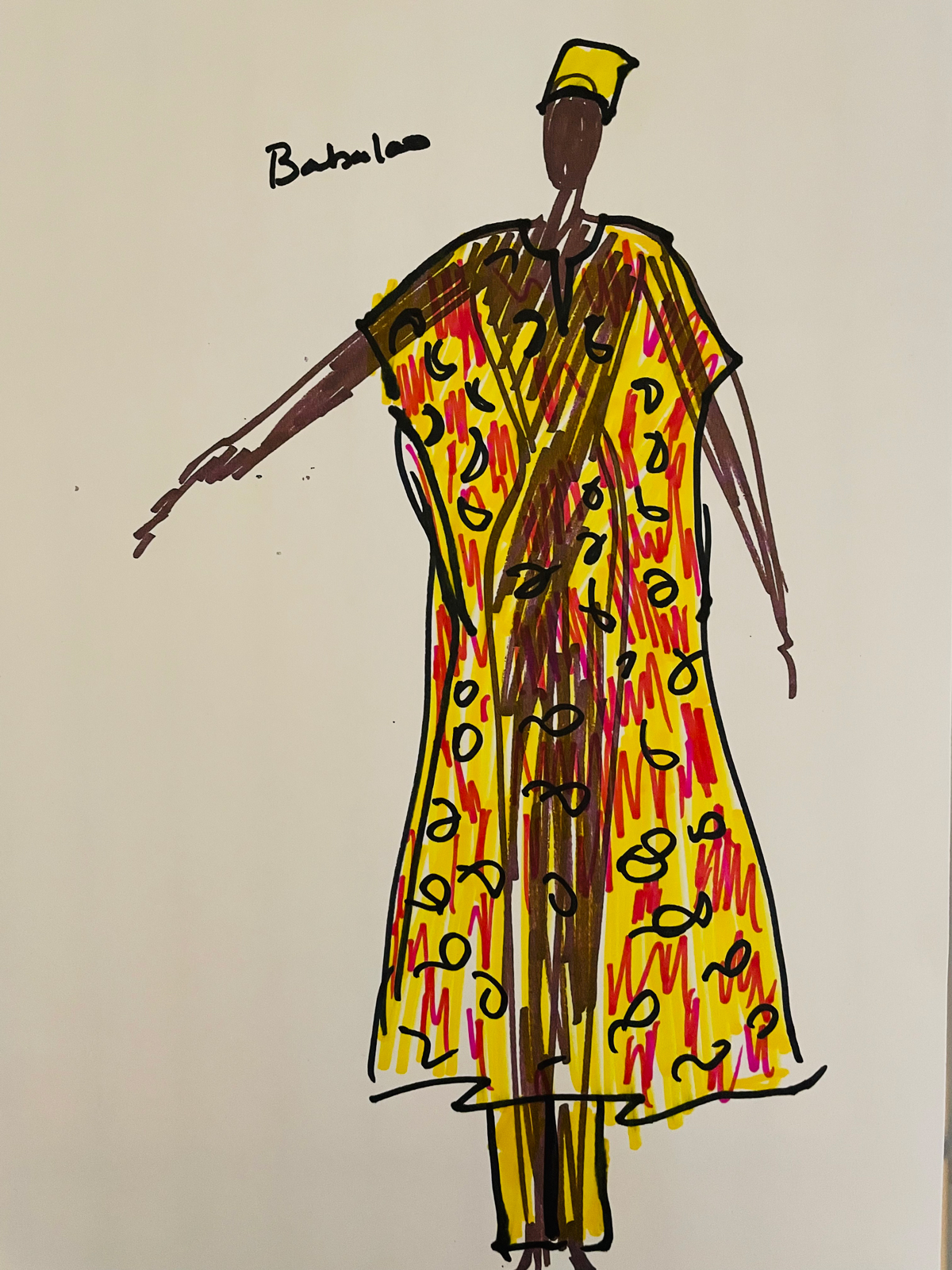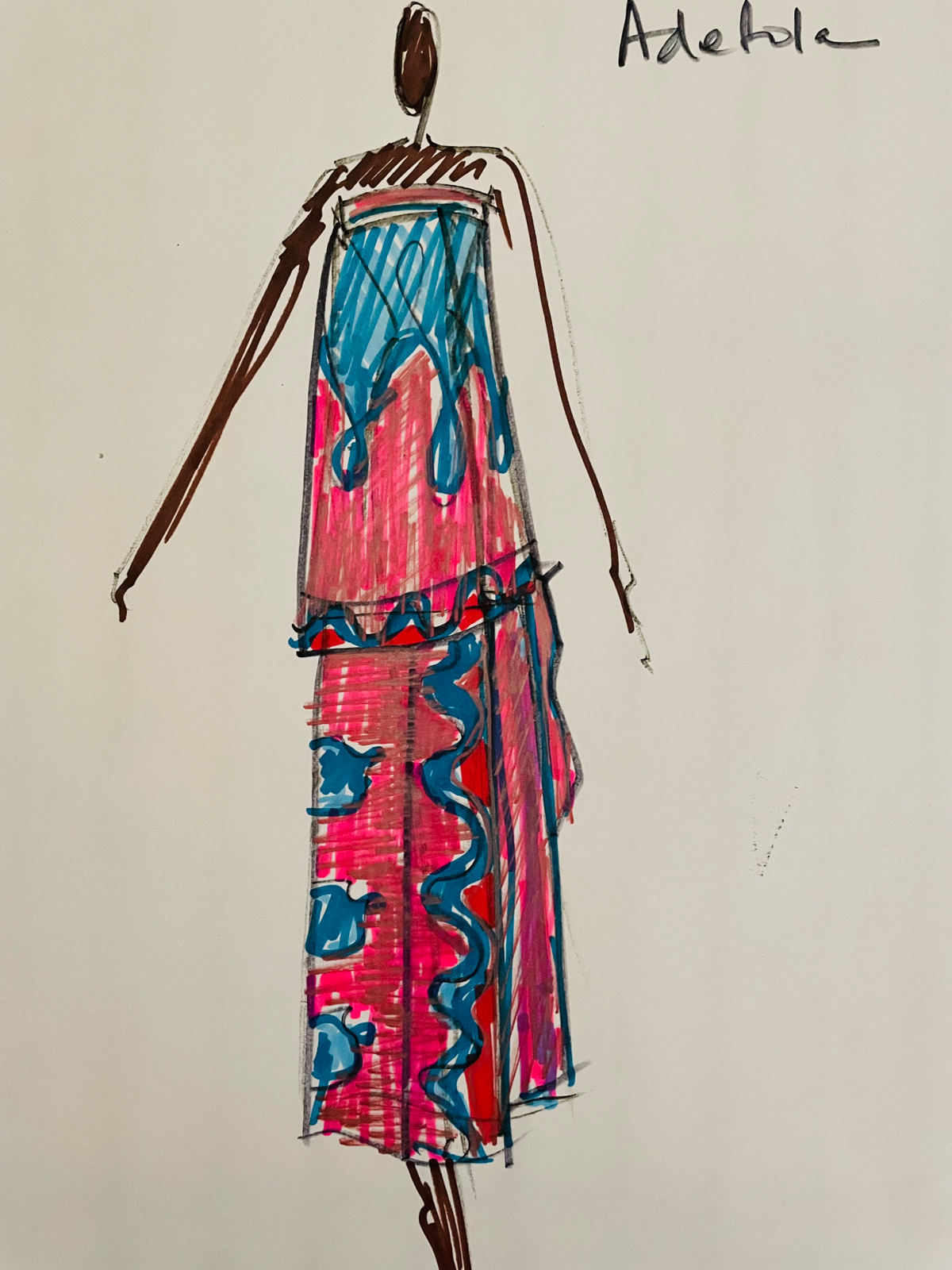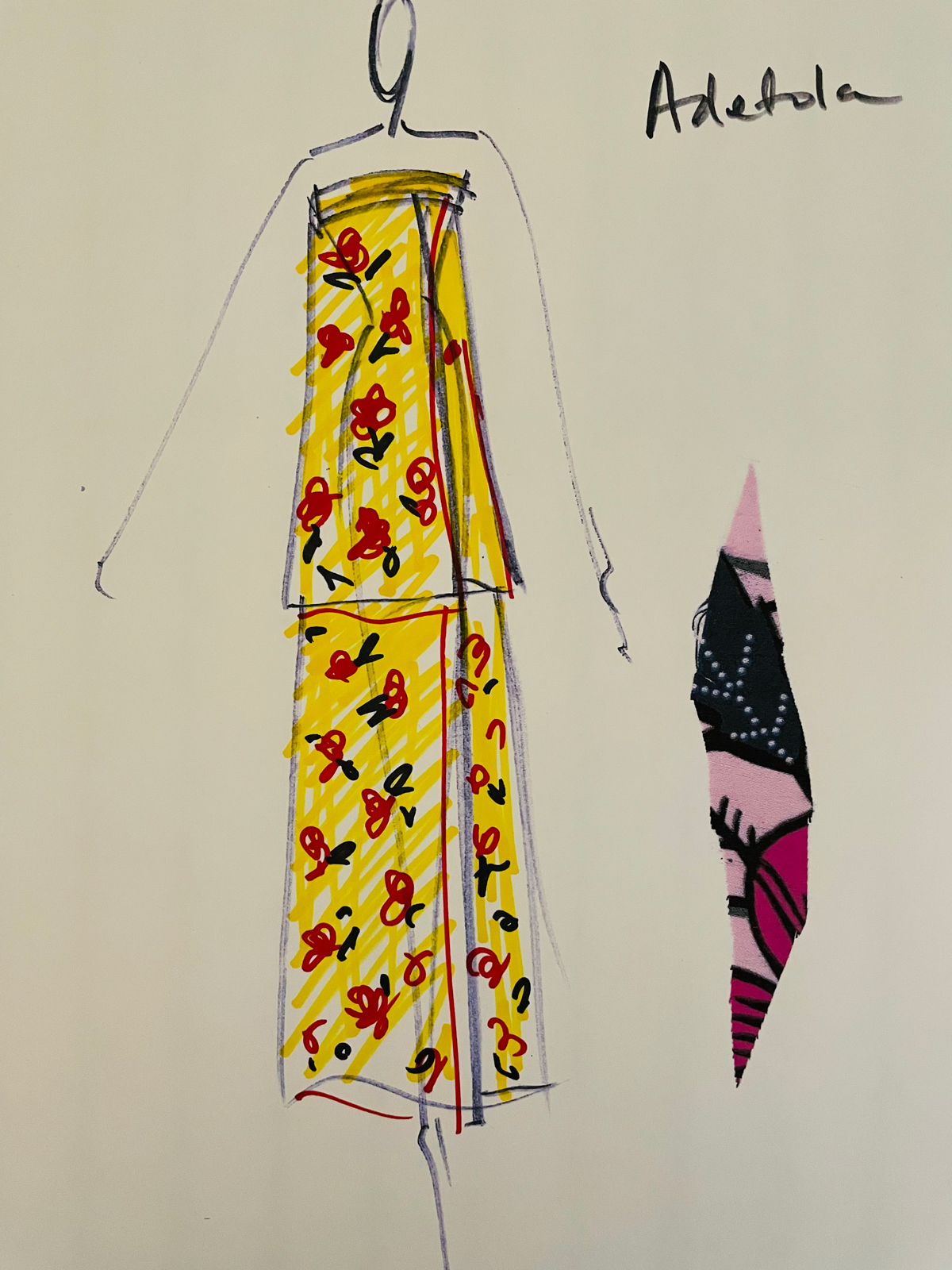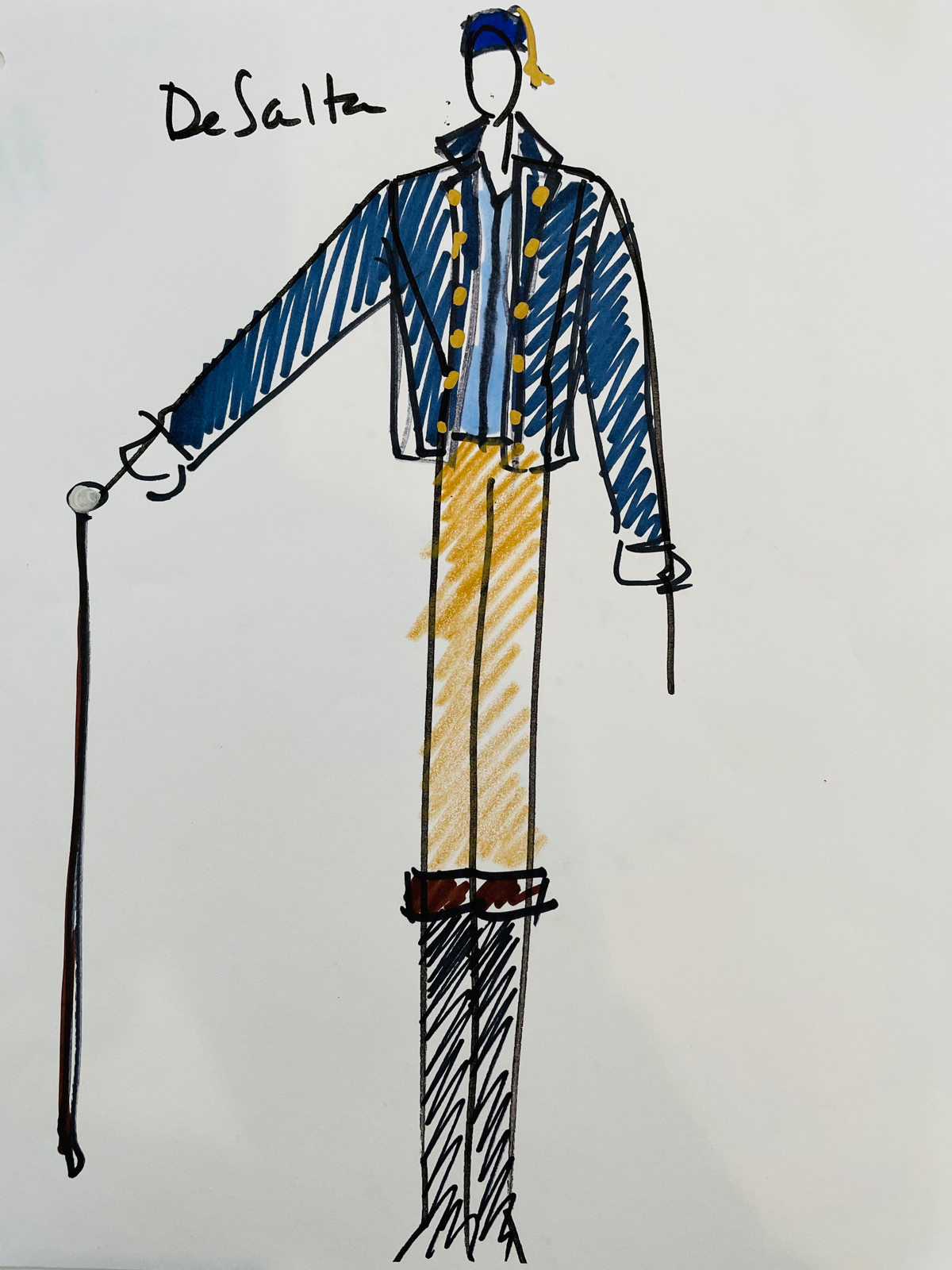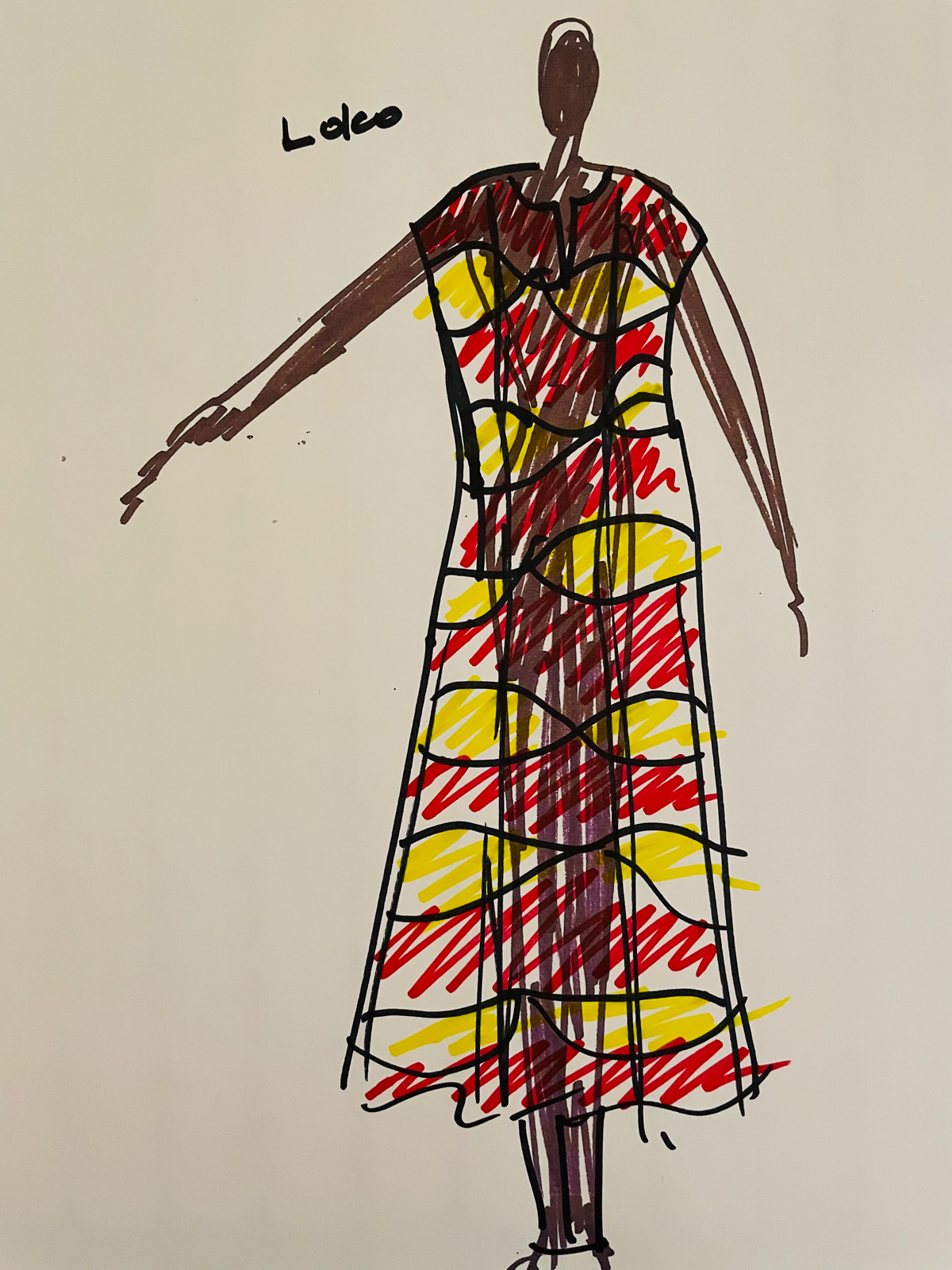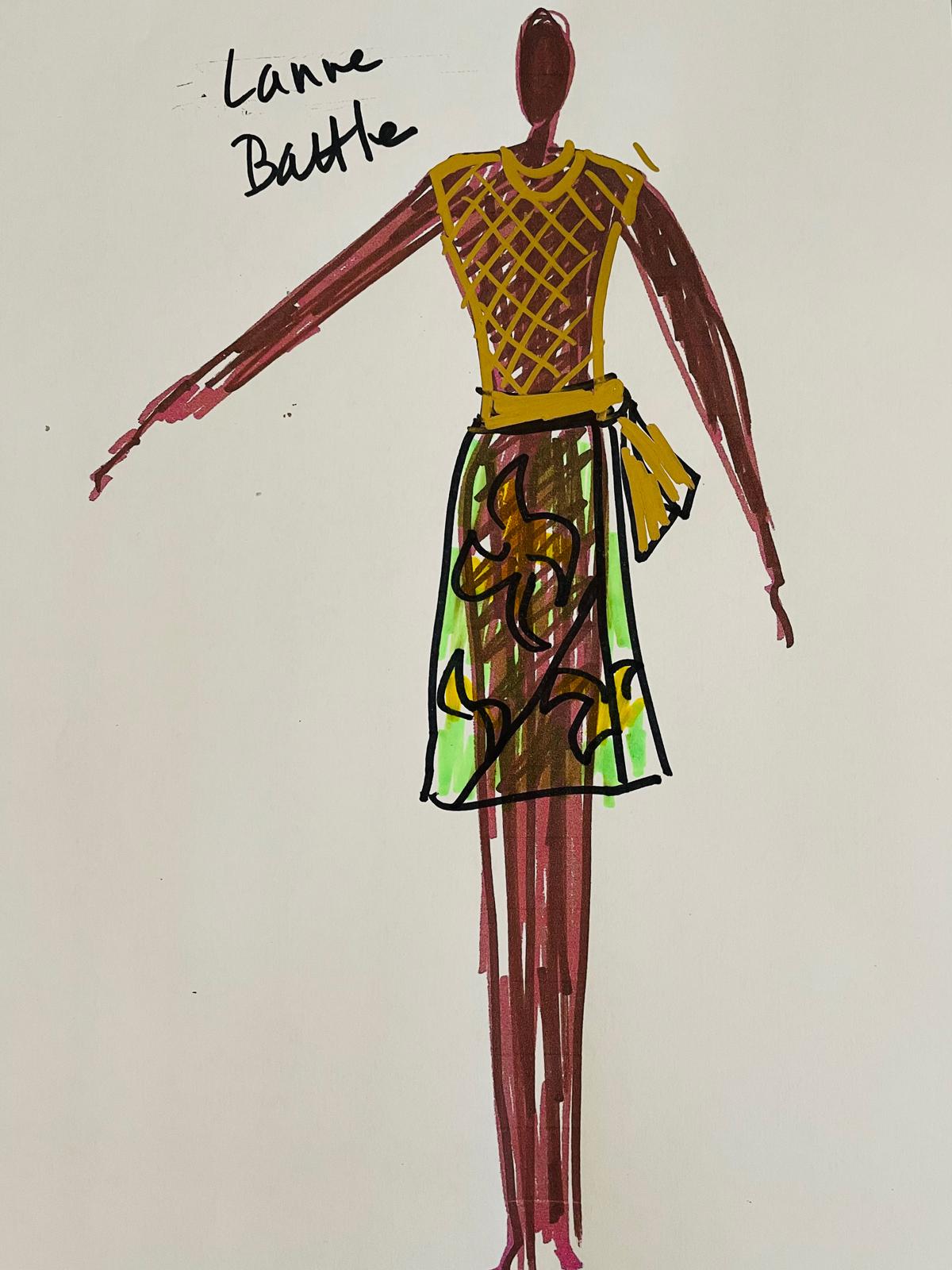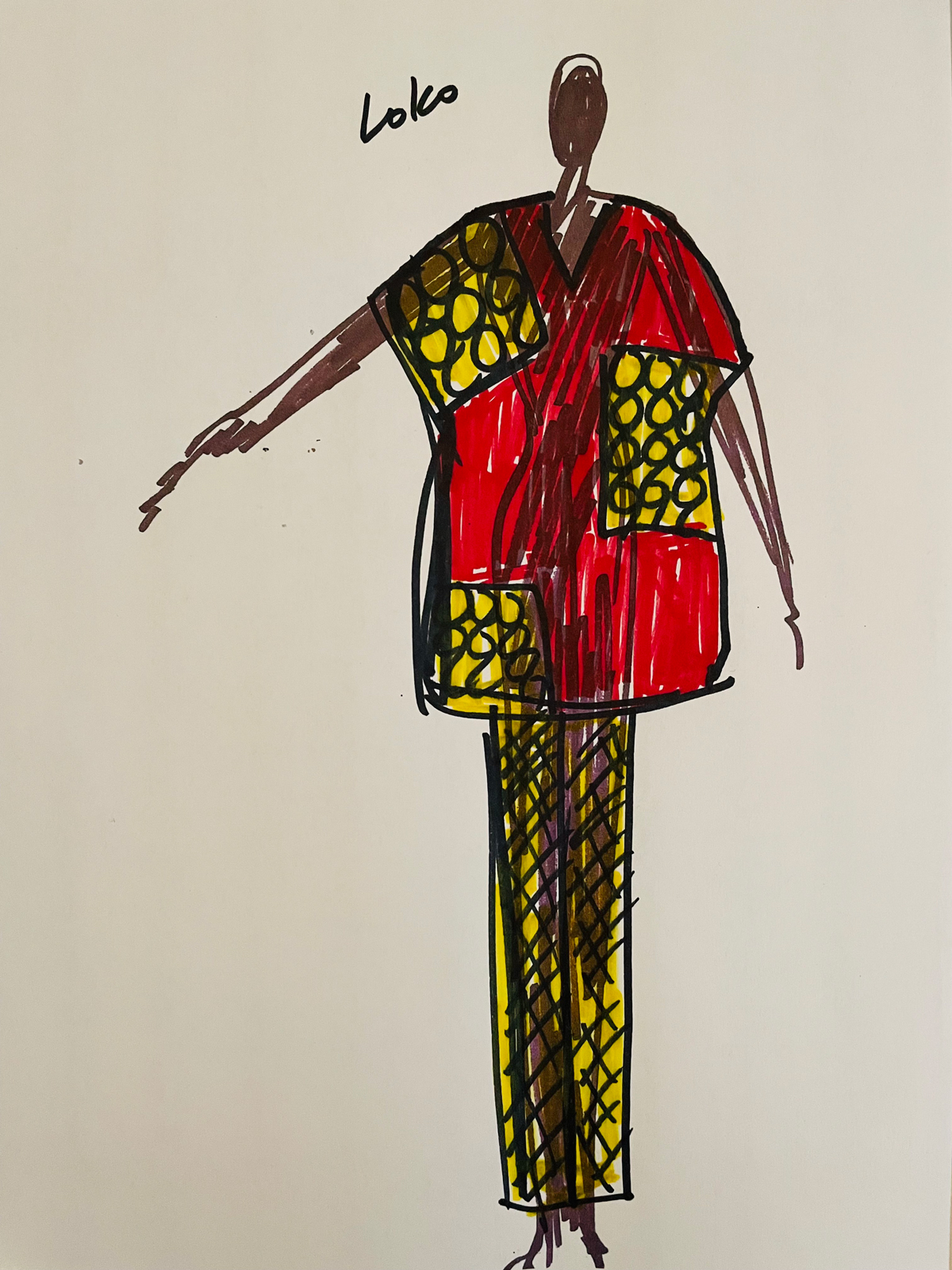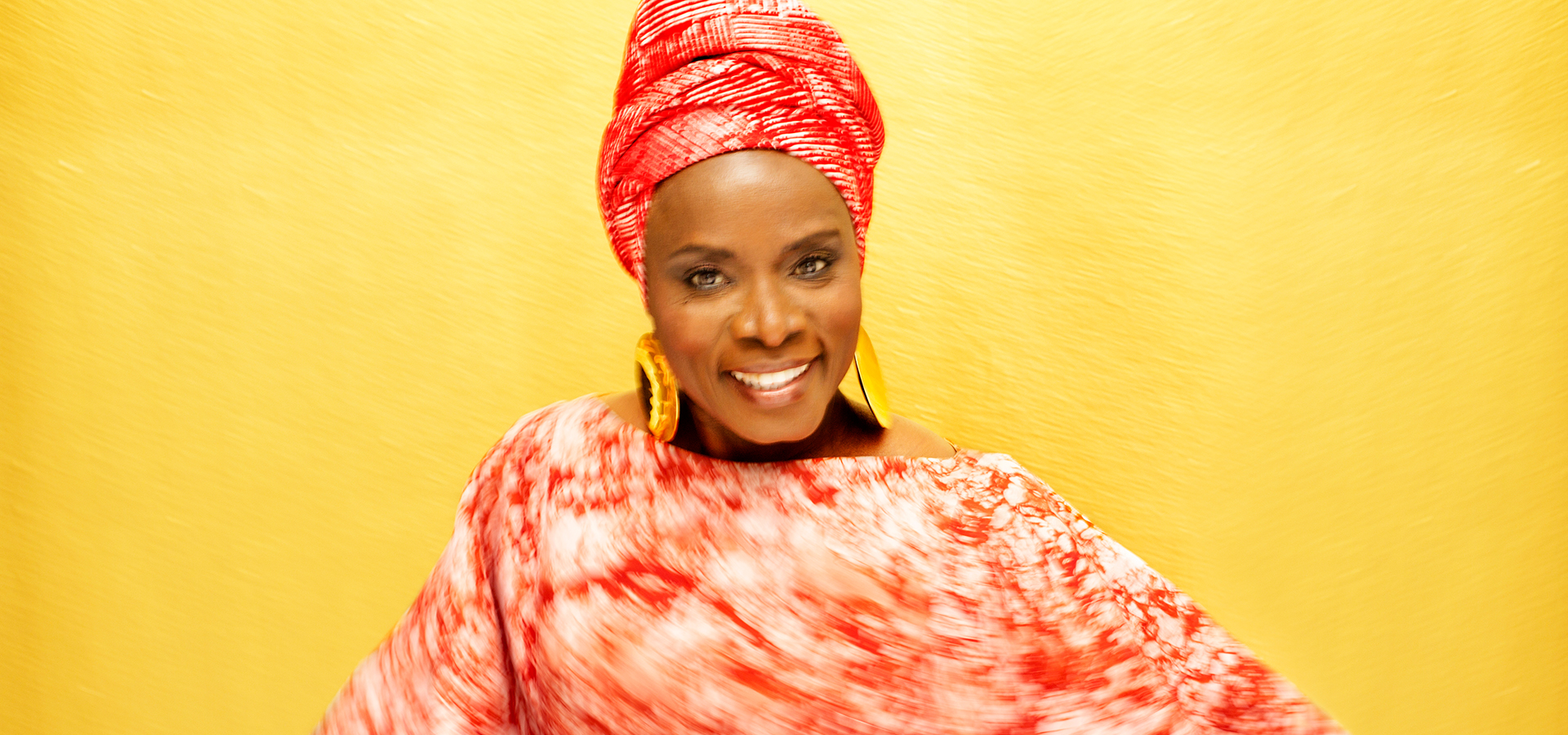Yemandja
A Cal Performances Co-commission
Saturday, April 23, 2022, 8pm
Zellerbach Hall
Conceived by Angélique Kidjo, Jean Hebrail, and Naïma Hebrail Kidjo
Book and Lyrics by Naïma Hebrail Kidjo
Music by Angélique Kidjo and Jean Hebrail
Developed with and Directed by Cheryl Lynn Bruce
Starring Angélique Kidjo
This performance will last approximately 105 minutes and be performed without an intermission.
From the Executive and Artistic Director

As many of you already know, earlier this week, Cal Performances announced details of its upcoming 2022–23 season. Beginning in September, with the brilliant Miami City Ballet and its legendary production of George Balanchine’s iconic Jewels (1967), and continuing into June 2023, when the ever-popular Eifman Ballet arrives at Zellerbach Hall with its lavish, fully staged Russian Hamlet, it’s a schedule packed with extraordinary opportunities to experience the very best in live music, dance, and theater.
And what a schedule! More than 70 events, with highlights including the return of the legendary Vienna Philharmonic Orchestra, under conductor Christian Thielemann; the beloved Mark Morris Dance Group in Morris’ new The Look of Love: An Evening of Dance to the Music of Burt Bacharach; revered South African artist William Kentridge’s astonishing new SIBYL; a rare Berkeley performance with the San Francisco Symphony and conductor Esa-Pekka Salonen; and a special concert with chamber music superstars pianist Emanuel Ax, violinist Leonidas Kavakos, and cellist Yo-Ma. And these are only a few of the amazing performances that await you!
Illuminations programming next season will take advantage of Cal Performances’ unique positioning as both a renowned international performing arts presenter and a part of one of the world’s top-ranked public research universities. Each season, Illuminations takes up a pressing theme reflected in both the arts and scholarship, and offers the public a multifaceted understanding of the issue by connecting research on the UC Berkeley campus with exceptional performances. This third season of Illuminations centers on the theme of “Human and Machine,” investigating how technology continues to catalyze and challenge creative expression and human communication. Through programming that includes performances, public events, artist talks, and symposia, we’ll be engaging communities on and off campus to examine the evolution of musical instruments, the complex relationships between technology creators and users, technology’s impact on the creative process, and questions raised by the growing role of artificial intelligence in our society.
This concept of “Human and Machine” has never been so pertinent to so many. Particularly over the course of the pandemic, the rapid expansion of technology’s role in improving communication and in helping us emotionally process unforeseen and, at times, extraordinarily difficult events has made a permanent mark on our human history. Throughout time, our reliance on technology to communicate has—for better or worse—influenced how we understand others as well as ourselves. During this Illuminations season, we will investigate how technology has contributed to our capacity for self-expression, as well as the potential dangers it may pose.
Some programs this season will bring joy and delight, and others will inspire reflection and stir debate. We are committed to presenting this wide range of artistic expression on our stages because or our faith in the performing arts’ unparalleled power to promote empathy. And it is because of our audiences’ openness and curiosity that we have the privilege of bringing such thought-provoking, adventurous performances to our campus. The Cal Performances community wants the arts to engage in important conversations, and to bring us all together as we see and feel the world through the experiences of others.
Please make sure to check out our brand new 44-page season brochure and our website for complete information. We can’t wait to share all the details with you, in print and online!
• • •
As the current season nears its conclusion, this weekend, in particular, occupies a special spot on our calendar. We are thrilled to welcome Germany’s esteemed Tetzlaff Quartet to Hertz Hall for a program of music by Haydn, Berg and Brahms. And we couldn’t be more excited about the Bay Area premiere of Yemandja, the first work of music theater by Angélique Kidjo, our wonderful 2021–22 artist-in-residence. Over the course of the entire season, Kidjo has repeatedly shared her genius as an artist and effervescent performer through a variety and performances and activities. In particular, I want to single out her tireless involvement in a host of related, non-performance events held throughout the season that brought this world-class talent into close contact with UC Berkeley students. [I also offer special thanks to our on-campus partners for Kidjo’s fall and spring campus residencies: the Haas School of Business; Social Science Matrix; Black Studies Collaboratory; Center for African Studies; Theater, Dance and Performance Studies; and Computing, Data Science and Society. Together, these valued colleagues provide a splendid example of creative cross-campus cooperation and collaboration.] Providing these opportunities is central to our mission, and no other artist I can think of could have so brilliantly (and enthusiastically!) met the challenges inherent in being a true “artist in residence.” Thank you, Angélique!
Jeremy Geffen
Executive and Artistic Director, Cal Performances
 As many of you already know, earlier this week, Cal Performances announced details of its upcoming 2022–23 season. Beginning in September, with the brilliant Miami City Ballet and its legendary production of George Balanchine’s iconic Jewels (1967), and continuing into June 2023, when the ever-popular Eifman Ballet arrives at Zellerbach Hall with its lavish, fully staged Russian Hamlet, it’s a schedule packed with extraordinary opportunities to experience the very best in live music, dance, and theater.
As many of you already know, earlier this week, Cal Performances announced details of its upcoming 2022–23 season. Beginning in September, with the brilliant Miami City Ballet and its legendary production of George Balanchine’s iconic Jewels (1967), and continuing into June 2023, when the ever-popular Eifman Ballet arrives at Zellerbach Hall with its lavish, fully staged Russian Hamlet, it’s a schedule packed with extraordinary opportunities to experience the very best in live music, dance, and theater.
And what a schedule! More than 70 events, with highlights including the return of the legendary Vienna Philharmonic Orchestra, under conductor Christian Thielemann; the beloved Mark Morris Dance Group in Morris’ new The Look of Love: An Evening of Dance to the Music of Burt Bacharach; revered South African artist William Kentridge’s astonishing new SIBYL; a rare Berkeley performance with the San Francisco Symphony and conductor Esa-Pekka Salonen; and a special concert with chamber music superstars pianist Emanuel Ax, violinist Leonidas Kavakos, and cellist Yo-Ma. And these are only a few of the amazing performances that await you!
Illuminations programming next season will take advantage of Cal Performances’ unique positioning as both a renowned international performing arts presenter and a part of one of the world’s top-ranked public research universities. Each season, Illuminations takes up a pressing theme reflected in both the arts and scholarship, and offers the public a multifaceted understanding of the issue by connecting research on the UC Berkeley campus with exceptional performances. This third season of Illuminations centers on the theme of “Human and Machine,” investigating how technology continues to catalyze and challenge creative expression and human communication. Through programming that includes performances, public events, artist talks, and symposia, we’ll be engaging communities on and off campus to examine the evolution of musical instruments, the complex relationships between technology creators and users, technology’s impact on the creative process, and questions raised by the growing role of artificial intelligence in our society.
This concept of “Human and Machine” has never been so pertinent to so many. Particularly over the course of the pandemic, the rapid expansion of technology’s role in improving communication and in helping us emotionally process unforeseen and, at times, extraordinarily difficult events has made a permanent mark on our human history. Throughout time, our reliance on technology to communicate has—for better or worse—influenced how we understand others as well as ourselves. During this Illuminations season, we will investigate how technology has contributed to our capacity for self-expression, as well as the potential dangers it may pose.
Some programs this season will bring joy and delight, and others will inspire reflection and stir debate. We are committed to presenting this wide range of artistic expression on our stages because or our faith in the performing arts’ unparalleled power to promote empathy. And it is because of our audiences’ openness and curiosity that we have the privilege of bringing such thought-provoking, adventurous performances to our campus. The Cal Performances community wants the arts to engage in important conversations, and to bring us all together as we see and feel the world through the experiences of others.
Please make sure to check out our brand new 44-page season brochure and our website for complete information. We can’t wait to share all the details with you, in print and online!
• • •
As the current season nears its conclusion, this weekend, in particular, occupies a special spot on our calendar. We are thrilled to welcome Germany’s esteemed Tetzlaff Quartet to Hertz Hall for a program of music by Haydn, Berg and Brahms. And we couldn’t be more excited about the Bay Area premiere of Yemandja, the first work of music theater by Angélique Kidjo, our wonderful 2021–22 artist-in-residence. Over the course of the entire season, Kidjo has repeatedly shared her genius as an artist and effervescent performer through a variety and performances and activities. In particular, I want to single out her tireless involvement in a host of related, non-performance events held throughout the season that brought this world-class talent into close contact with UC Berkeley students. [I also offer special thanks to our on-campus partners for Kidjo’s fall and spring campus residencies: the Haas School of Business; Social Science Matrix; Black Studies Collaboratory; Center for African Studies; Theater, Dance and Performance Studies; and Computing, Data Science and Society. Together, these valued colleagues provide a splendid example of creative cross-campus cooperation and collaboration.] Providing these opportunities is central to our mission, and no other artist I can think of could have so brilliantly (and enthusiastically!) met the challenges inherent in being a true “artist in residence.” Thank you, Angélique!
Jeremy Geffen
Executive and Artistic Director, Cal Performances
Synopsis
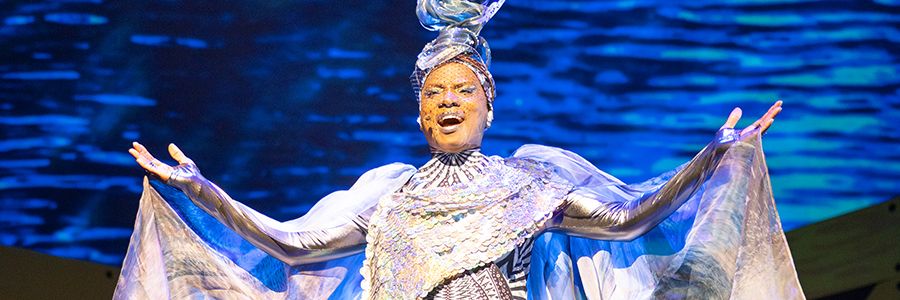
Human world and spirit world wait for a special baby to be born under the full moon on the night before the Egungun ceremonies. Ancestors vie for a chance to be Omolola’s guiding spirit. In an unusual twist, orishas Orò and Yemandja throw their hats in the ring—the latter wins! Yemandja tells us about herself and that she will be our guide.
Scene 2
We meet a grown up Omolola and her fiancé Olajuwon, mixed-race son of the slaver DeSalta. Omolola’s parents interrupt their flirting with an argument about the slave trade. We learn about Adefola’s hatred of slavery, Loko’s role as a General in the trade, the impact of the latter on Olajuwon. Omolola, on the other hand, has still to form a firm opinion. Loko, Adefola, Omolola, and Olajuwon have a family debate about the role and implications of slavery in their lives.
Scene 3
Their discussion is interrupted by a procession of slaves leaving their shores. Yemandja and Adefola sing a farewell to their people. Adefola spots Babalao and tries to free him.
Scene 4
DeSalta arrives and proclaims his honesty, but chaos ensues at his refusal to free Babalao. Omolola sings to try and fix the situation but, blown astray by Orò, her desire to hurt DeSalta corrupts her song. Enraged, DeSalta kills Adefola and Babalao.
Scene 5
Omolola and Loko mourn Adefola; Loko rallies troops to get his vengeance. Omolola and Loko weave together a lament for Adefola which transforms into an awakening. Loko fights and is joined by other enraged villagers.
Scene 6
Omolola wants to abandon her gift but Yemandja tries to reassure her.
Scene 7
Omolola and Olajuwon’s relationship starts to fissure under grief and suspicion’s strain.
Scene 8
DeSalta forces Naguézé to spy on Loko for him. We understand how ambitious and power-hungry DeSalta is. Omolola overhears.
Scene 9
Naguézé comes to Loko but she proclaims her loyalties are not with DeSalta. She asks him to marry her to let her prove her loyalty and to protect her from DeSalta. Naguézé recounts her plight as a princess and DeSalta’s betrothed but vows to regain her power and help Loko and their people. Loko agrees to an engagement.
Scene 10
Omolola sings of the gulf between what people predicted she would become and who she has become.
Scene 11
Yemandja sings as Loko sets his plan in motion; he will let leak to DeSalta that he plans to attack the next day, but in fact will attack that night! Orò and Yemandja face off once more as Orò beats his drum, inciting violence in the humans.
Scene 12
DeSalta plans to strike this very night. Loko and DeSalta are proclaiming their intentions and power. At the end of the song DeSalta surprises Loko and a fight ensues. Loko and DeSalta fight, Orò and Yemandja fight, Omolola is weaving in and out, at a loss. Suddenly she is the focus of the fight. She tries to sing to escape, her song fails, and Yemandja intervenes.
Scene 13
Now in the spirit world with Yemandja, the two revisit the moment right after Yemandja made the oceans. She regrets her anger, but Orò is inspired.
Scene 14
Yemandja takes Omolola to DeSalta’s path where, as a 16 year old, he is being taught how to be brutal in order to gain power and prosper. Omolola is incredulous that Yemandja would want her to feel sympathy for DeSalta. Yemandja teaches that in order to build bridges we must try to understand.
Scene 15
Yemandja takes Omolola to a moment immediately after she first used her powers. Babalao recounts the moment she sang unity to the children of the village who had previously wanted to bully Olajuwon. Omolola feels the weight of her failure, but Yemandja teaches her that anger can be empowering—if one taps into the love within.
Scene 16
Yemandja takes Omolola to the moment when Olajuwon asked Loko and Adefola for Omolola’s hand. He proclaims his love for Omolola and paints a picture of their life together.
Scene 17
Yemandja’s last wave of vision shows Omolola that when she is gone, things fall apart. Loko and Olajuwon fight. Then, Olajuwon and DeSalta disagree; DeSalta decides to sell Olajuwon into slavery before he becomes even more dangerous to him.
Scene 18
Omolola is outraged by DeSalta’s plan and, at last, is ready to intervene. She turns to ask Yemandja to send her back, but the goddess is gone. Omolola sings a short song that transports her back to her world; she finally is ready to use her power again. Omolola finds Olajuwon and warns him. Omolola sings her love for Olajuwon and of the duality in all of us that makes the world stronger.
Scene 19
Omolola and Olajuwon interrupt DeSalta trying to convince Loko to pledge allegiance to him. Omolola sings the story of the world breaking apart and weaves us back together. Yemandja closes us out.
About the Performance
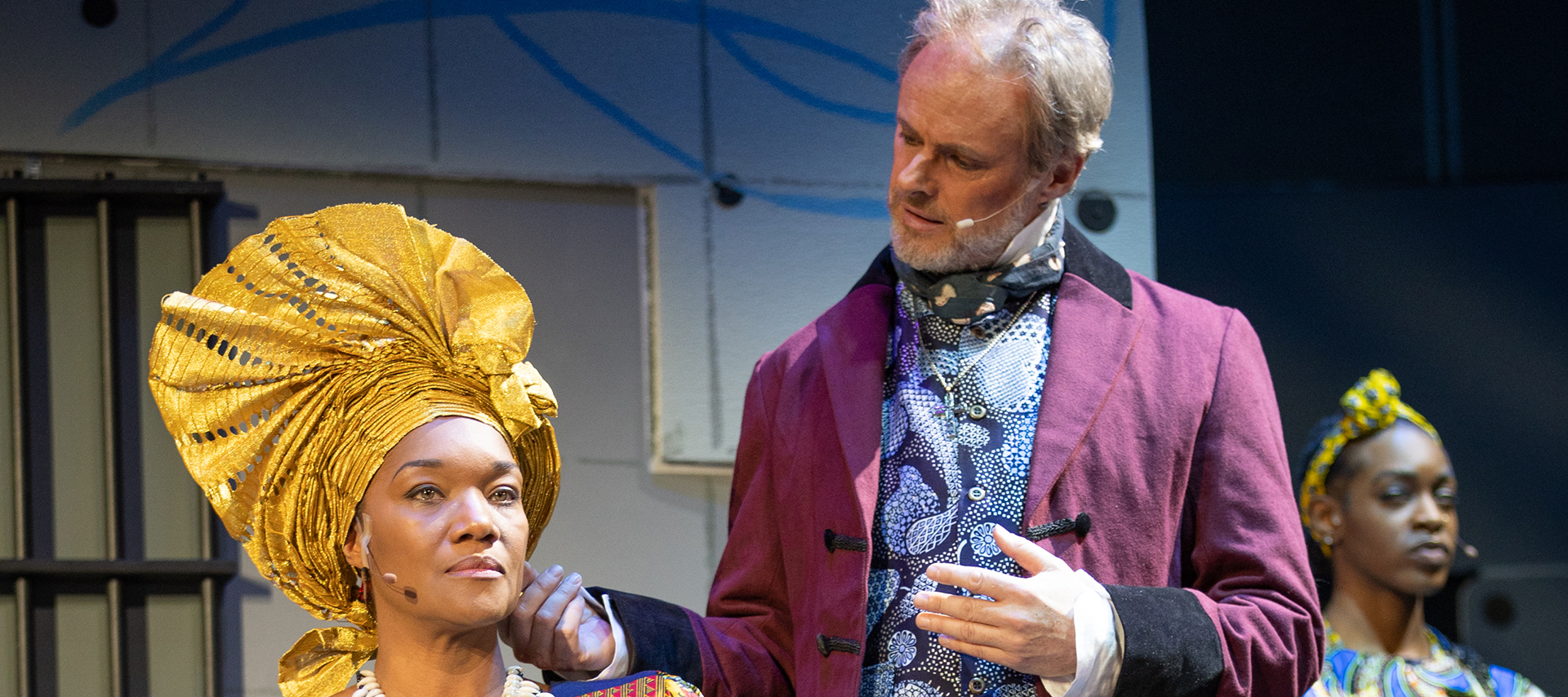
Orishas
The orishas are spirits that play a key role in the Yoruba religion of West Africa and several religions of the African diaspora that derive from it, such as Cuban and Puerto Rican Santería and Brazilian Candomblé. They are also venerated by the Edo of southeastern Nigeria; the Ewe of Ghana, Benin, and Togo; and the Fon of Benin (who refer to them as voduns). An orisha may be said to arise when a divine power to command and make things happen converges with a natural force, a deified ancestor, and an object that witnesses and supports that convergence and alignment. An orisha, therefore, is a complex multidimensional unity linking people, objects, and powers. The story of Yemandja explores the relationship between two orishas: Yemandja and Orò.
Yemandja
Yemandja is the goddess of water and healing, and is honored throughout West Africa and the Caribbean as the mother of the sea and the moon. She is the keeper of the female mysteries and a guardian of women. She aids in the conception of children and their birth, protecting and blessing infants until they reach puberty. She is a healing goddess, showing compassion and kindness to those in need.
Orò
The word “orò” means “fierceness,” “tempest,” or “provocation,” and Orò himself appears to be a personified executive power whose approach is always preceded by a roaring wind and whirring sound. In precolonial times, the Orò cult performed legislative, executive, and judicial functions in Yoruban society. Orò is known as the Yoruba deity of bullroarers and justice. Orò executed criminals, could exile people (or sell them into slavery), and cleansed the community of witchcraft.
Depending on the region and country, the spelling of Yemandja’s name differs between Yemandja, Yemoja, Yemaya, and other slight variations.
A NOTE FROM NAÏMA HEBRAIL KIDJO
A river does not flow and forget its source.
Yemandja was born from a deeply personal place: hearing my mother’s stories of her childhood in Benin. There, the mythical and the mystical were intertwined with the modern. Her youth in Africa always struck me as bright: filled with life, community, tradition, and music. This was a contrast to my upbringing between France and America, where mysticality was “primitive” and the individual was paramount.
This piece is my attempt to reconcile all the worlds I grew up between, and all of the worlds within—to build my own bridge in order to help you build your’s. Because no matter your background, you also contain dualities—even simply by virtue of being the child of two different people. So, through words and song, we hope to take you on a journey both outside of and within yourself. The destination? Healing and a more open heart.
What are the ramifications of fostering fear, of responding to hatred with even more hatred? What does it mean that our modern thriving economies are built on the slave trade and slave labor—both historically and in terms of new forms of modern slavery? Who does war, pain, and division really benefit? What is the impact when we think only of short-term gains when long-term harm is inevitable? These are all big questions posed by this piece.
My aim is not to rewrite history, minimize the importance of accountability, or simplify the complexities of the human experience but, instead, to remind us that individuality placed above community is not a sustainable solution. We may be separated by miles of beliefs, mountains of appearances, oceans of hurt, but since the dawn of the human race we have all been intertwined genetically, historically, and spiritually. All the divisions have been of our own making. So when the world feels too big, Yemandja is a reminder that we are all linked and that we have the power to change the world with empathy, be it through small everyday kindnesses, or grand heroic acts of humanity.
A river does not flow and forget its source.
Actions have consequences.
YORUBA PROVERBS (selected)
Ogbón ju agbára.
Wisdom is much greater than strength.
Adùn ní ńgbèhìn ewúro.
The aftertaste of the bitterleaf is sweet.
Odò kì í san kó gbàgbé ìsun
A river does not flow and forget its source.
A kì í nàró ká ọdún.
You cannot stand upright all year.
Àjèjé ọwọ kan ò gbégbá karí.
One hand alone cannot lift the calabash to its head.
Nì palaba, ní wonko, .èr.èk.é á .sèkan.
The cheek must be either sunken or swollen, but not both.
Bí ó bá bá ojú, á bá imú pèlú.
Any disaster that befalls the eye, is a disaster that will befall the nose.
Ìgbé lẹtu mbá erin gbé.
The forest is home to the antelope and elephant both.
Okòòkan là ńyọ ẹsè lábàtà.
One foot at a time is how to extricate oneself from a mire.
QUOTES BY YEMANDJA (selected)
“Will you journey through the past that can tomorrow forecast?”
“Each of us alone is a single feather, but bring us all together and we make a mighty wing.”
“Every person has two things in common: imperfection and the desire to be seen.”
“But how can you build a solid bridge without looking at the other side of the river? Perhaps one day you will see, like I did, that the opposite of violence is the desire to understand.”



